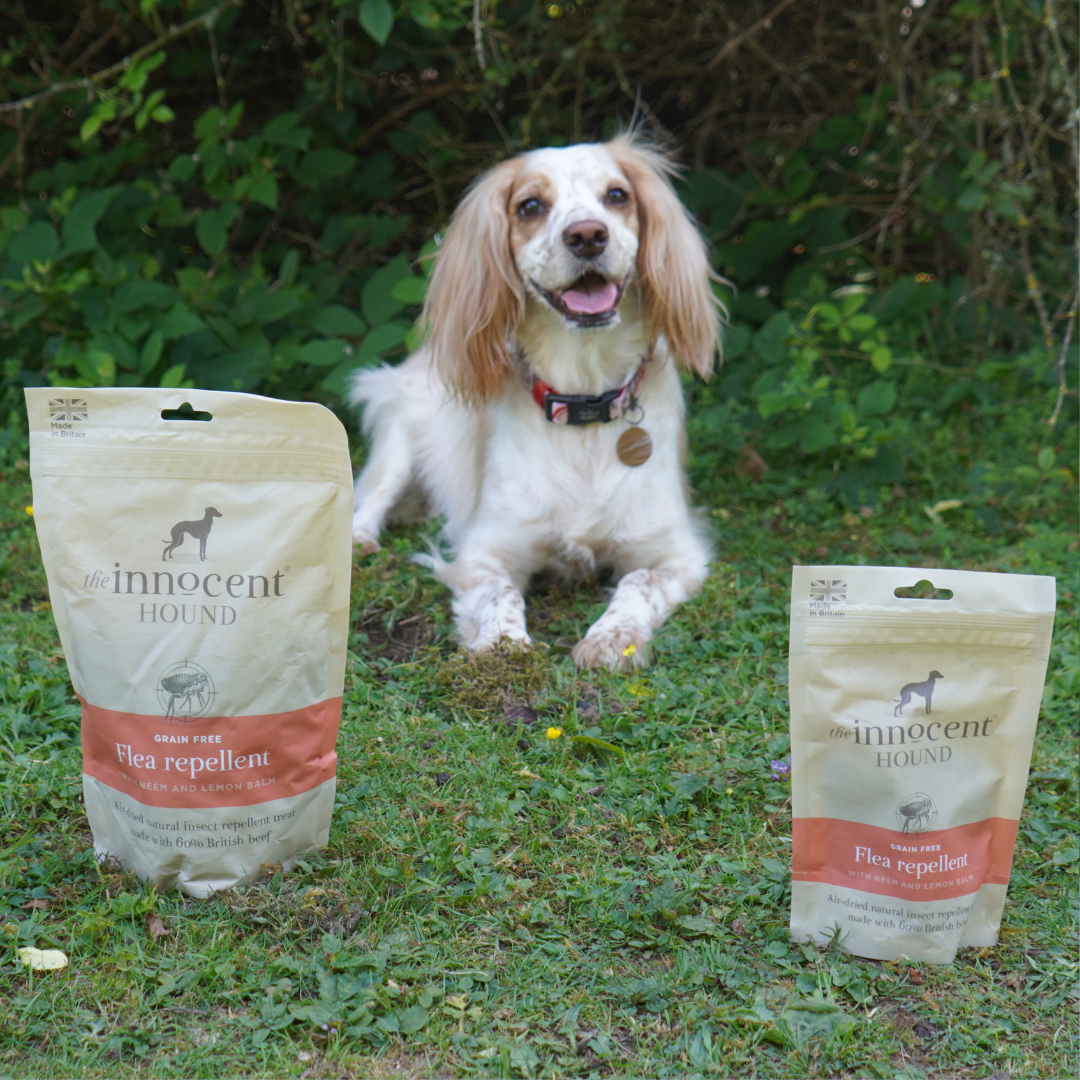What are fleas and ticks?
Fleas and ticks are ectoparasites – this means that they live on the outside of your dog. Whilst being horrible to think about, they also have the chance to cause irritation and inflammation in your canine companion as well as potentially to us! Not only that, they can also transmit diseases and cause allergies.
Fleas can jump and can be pretty small. They have six legs and 95% of flea live in the environment with approximately 5% living on your pet.
The common tick (Ixodes Ricinus) has 8 legs and is more similar to other arachnids. Both of these bugs though, love your pet’s fur and both feed on their blood. The act of feeding can easily irritate the skin and moving about the body can also make them itch. With very large infections of fleas, or in very small canine patients, fleas can even lead to anaemia (a reduction of red blood cells).

Fleas can be spread between dogs and picked up from the environment. They have the ability to cause skin disease as well as transmit tapeworms. Ticks, however, can spread more blood borne, more serious diseases such as Lyme’s disease.
How to identify ticks
Regularly monitor your dogs after walks, especially in long grasses to try and identify any ticks which have launched themselves towards them and attached to their coats or skin. It is important to try and remove these as soon as possible, but as important is to remove the tick and its mouthparts from their point of attachment. This usually requires a special technique and handy remover. If you should notice a tick, consider taking your dog to your local veterinary practice and have a nurse show you how to safely remove and assess full removal from your dog.
How to prevent fleas and ticks
There are a variety of treatments for your dog which include tablets, spot-on treatments, flea collars and even formulated diets e.g. The Innocent Hound Flea Repellent Treats which can aid in reducing the chances of flea infestations.
Discuss the possible options through your vet and remember that there may be products available out there, but the prescription medicines will be more likely to be effective – both in ridding of an infection and also cost. If the formulation of a drug works to get rid of the fleas, then it should also last a period of time.
Animals with flea related allergies should also be treated preventatively and not just when fleas are noticed. This is to prevent the skin becoming inflamed, which can often be induced by only one flea bite! Remember, that should your pet develop a flea infection then it will be necessary to not only treat all animals in the household but the house itself as the majority of the flea friends will live in the environment! Again, your veterinary surgeon should be able to advise you on possible treatments.
With thanks to
Dr Marvin J.Firth BVSc (Hons.), DipRCPath, DipFMS, AFHEA, MRSB, MRCVS
Veterinary Surgeon
Anatomic Pathologist
FEI PT Veterinarian
The Innocent Hound - Natural Flea Repellent Treats
With the weather being warmer, now we are in the British Summertime, Fleas and ticks are abundant and love to take up residency on our pets, Here at The Innocent Hound, we offer our Natural Flea Repellent Treats, these treats are an easy way of adding this natural supplement into your dog’s diet, in a tasty and convenient format.
The properties of neem help to protect and prevent your hound from undesirable insects whilst promoting a healthy skin and coat.



0 comments